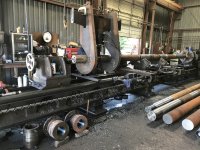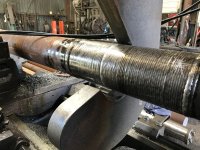jackie schmidt
New member
https://www.google.com/url?sa=t&rct...=lgk8NOTJeTw&usg=AOvVaw2jS7DR4caMsfdlE8PB49CS
https://www.google.com/url?sa=t&rct...=1UwtYfFMAbU&usg=AOvVaw1eDp9Ap5mxjbVx8JB-c6Of
This came in yesterday on a emergency dry docking. I set it up and straightened it.
This is one our more lucrative services, since few shops have the equipment to precision straighten this large of a piece. The rig you see hanging is our 700 unit.
It took me and one of my men about Three hours to set It it up and straighten it.
https://www.google.com/url?sa=t&rct...=1UwtYfFMAbU&usg=AOvVaw1eDp9Ap5mxjbVx8JB-c6Of
This came in yesterday on a emergency dry docking. I set it up and straightened it.
This is one our more lucrative services, since few shops have the equipment to precision straighten this large of a piece. The rig you see hanging is our 700 unit.
It took me and one of my men about Three hours to set It it up and straighten it.
Last edited:



